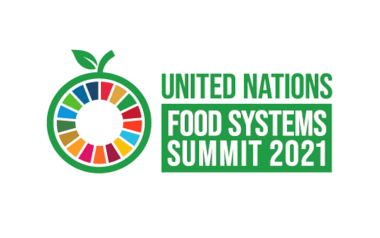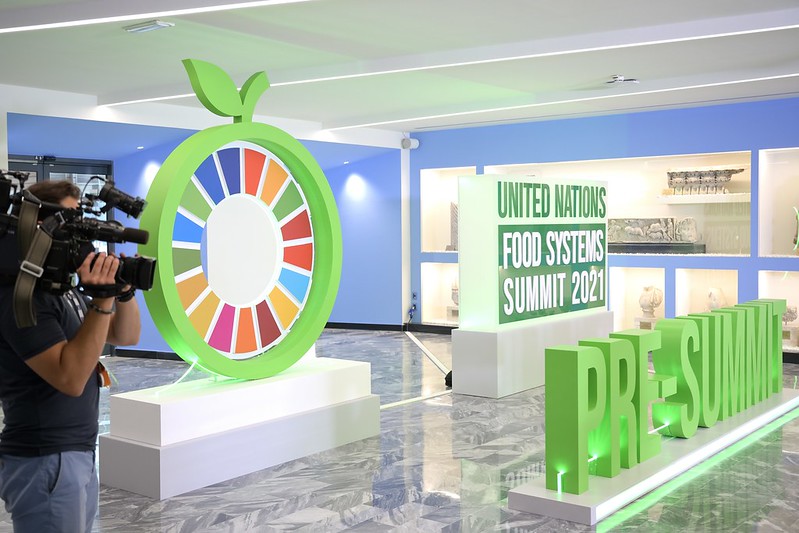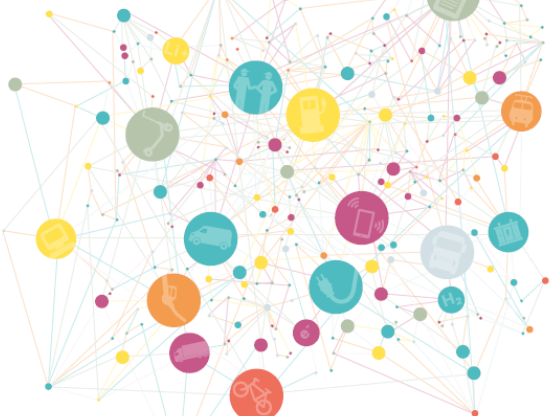Share Twitter Facebook Email Copy URL
During the COVID-19 pandemic, what is needed is not vague “transformation” rhetoric, but concrete and radical government action against the food and health crisis.
On 23 September, the Global Food Systems Summit will take place in New York as part of the UN General Assembly. What can be expected from the summit? The United Nations sees the Summit as a major participatory happening in which all kinds of stakeholder groups, from small farmers to consumers to financial investors, come together to discuss a fundamental transformation of food systems. „It is a summit for everyone everywhere – a peoples summit“, says the conference website.[1] Sounds nice, almost idyllic, but what does it mean? As a result of the Summit, a “Call for Action” and the development of general principles will be announced.
A fundamental transformation is urgently overdue in view of the worsening climate crisis and the growing number of hungry people worldwide. But will this come about through round tables? The global lockdowns in response to the COVID-19 pandemic have massively exacerbated the global food crisis in many regions. Governments have a duty to act in this situation. However, the UN Special Rapporteur on the Right to Food, Michael Fakhri, vehemently criticises the fact that COVID-19 is practically absent from the programme of the Food Systems Summit.[2]
It is obvious that the working classes in the global food system have been particularly affected by COVID-19 and by the lockdowns. Many have suffered dramatic income losses. Many small farmers and wage earners, especially in agriculture but also in the downstream sectors, belong to the working poor – their income is already below the poverty line due to low wages and sometimes only seasonal employment. During lockdown, they have to accept painful income losses.

Working poor also means: lack of social security and health insurance. Many smallholder farmers and food system workers who fall ill are temporarily left without any income. Lack of income combined with rising food prices leads to a downward spiral. Examples from different countries like China or Guatemala show what this leads to: Mothers, fathers and children are restricting their daily diet more and more drastically. The variety of diets, the nutrients, and the number of meals are decreasing and people are sliding into hunger.[3]
The loss of income and jobs is often linked to supply chains being torn apart: In the first few months after the global outbreak of the COVID-19 pandemic, this was particularly evident in global supply chains. For example, the cut flower trade in the Netherlands temporarily collapsed, with drastic consequences for tens of thousands of workers in cut flower cultivation in East Africa. Another example was the closure of the tea trading operation in Mombasa, Kenya. In recent months, however, it has become clearer that it is primarily a multitude of supply chains at the local and regional level that are tearing apart. In many countries, the closure of the catering industry in particular led to the loss of sales markets for farmers and traders. The large and globally growing group of seasonal workers has also been affected by restrictions on freedom of movement imposed by governments in many regions since last year. For example, three quarters of rice producers in Ethiopia ran into problems due to a travel ban on day labourers who weed and harvest for them.[4]
Where production and sales have continued, workers in the food system are exposed to high risks of infection. Be it shop assistants, food processing workers or seasonal workers at the workplace and in their collective accommodation. Unlike employees in higher management echelons, they cannot continue their wage work at home, secluded behind their laptops, even in phases of rapidly rising infection rates. During the lockdown months last year, the big supermarket monopolies such as Walmart, Shoprite and Aldi made particularly high profits. At the same time, sales staff were permanently exposed to contact with customers without being compensated for this risk through hardship allowances. Workers in large meat factories bear a particular risk. The strenuous, tightly staggered piecework on the line makes it difficult to wear face masks all day and apparently makes many meat factories a haven of particular transmission risk. At a Tyson slaughterhouse in Iowa, USA, the number of transmissions last year was so high that managers made cynical bets on the number of infections. A total of 1000 workers became infected, six of them died.[5]

Photo: FAO/Carlo Perla. Editorial use only. Copyright ©FAO.
Governments must act – now!
What does all this mean for the Food Systems Summit? Governments have a duty to protect and ensure their citizens’ right to health and food. They must act accordingly and not hide behind vague declarations of intent from so-called “peoples summits” and inconclusive round tables. In particular, the following five measures are necessary:
- In particular, those people who are exposed to a high risk of infection on a daily basis must be given the opportunity for testing and vaccination. What the United Nations and global summits must do now is to finally redistribute vaccines and release vaccine patents. This is currently the most urgent task, completely independent of sectoral issues of food policy. This is the responsibility of Western governments, especially the USA and Germany.
- The second global response to the COVID-19 pandemic should be the implementation of the ILO plan for a Global Social Protection Floor. The 2012 ILO proposal provides for a universal and progressive extension of social protection for all. The basis for this is the establishment of a Global Social Protection Fund, as called for by the international trade union centre ITUC.[6]
- In order to support small and medium-sized businesses during lockdown, but also to sustainably transform food systems, massive public support programmes are needed. It should be ensured through the involvement of trade unions and their federations that workers also benefit indirectly from these programmes.
- For workers in special risk sectors, there should be a hardship allowances for the risk they expose themselves to in times of COVID-19. This would be the adequate response to the realisation by many governments that agriculture, food production and sales are systemically important industries.
- Infection control and health protection at the workplace must be effectively monitored. In many areas, especially in agriculture, the density of checks by inspection authorities is far too low worldwide. States must be able to enforce and monitor legal OSH standards on the ground. For this, capacities and the number of checks must be significantly increased.
[1] United Nations (2021): Food Systems Summit – About the Summit, https://www.un.org/en/food-systems-summit/about
[2] Fakhri, Michael (2021): Last chance to make the Food Systems Summit truly a “peoples summit”. Policy Brief, August 2021, https://www.ohchr.org/Documents/Issues/Food/Policy_brief_20210819.pdf
[3] Swinnen, Johan et al. (2021): Beyond the Pandemic – Transforming Food Systems after COVID-19, in: IFPRI: Global Food Policy Report 2021, 12.
[4] Swinnen et al. (2021): 12
[5] BBC (2020): Tyson food managers bet on workers getting Covid-19, lawsuit says, https://www.bbc.com/news/world-us-canada-55009228
[6] ITUC (2020): A global protection fund is possible. ITUC Campaign Brief, https://www.ituc-csi.org/IMG/pdf/ituc_campaign_brief_-_a_global_social_protection_fund_en_v3.pdf



